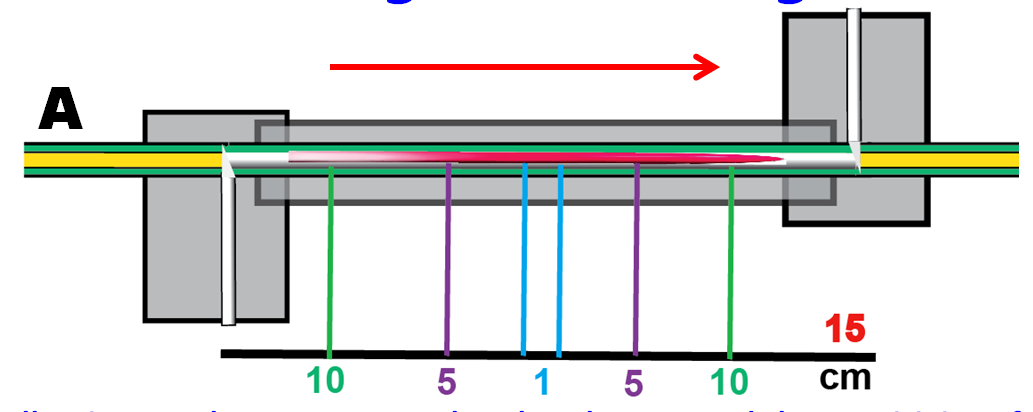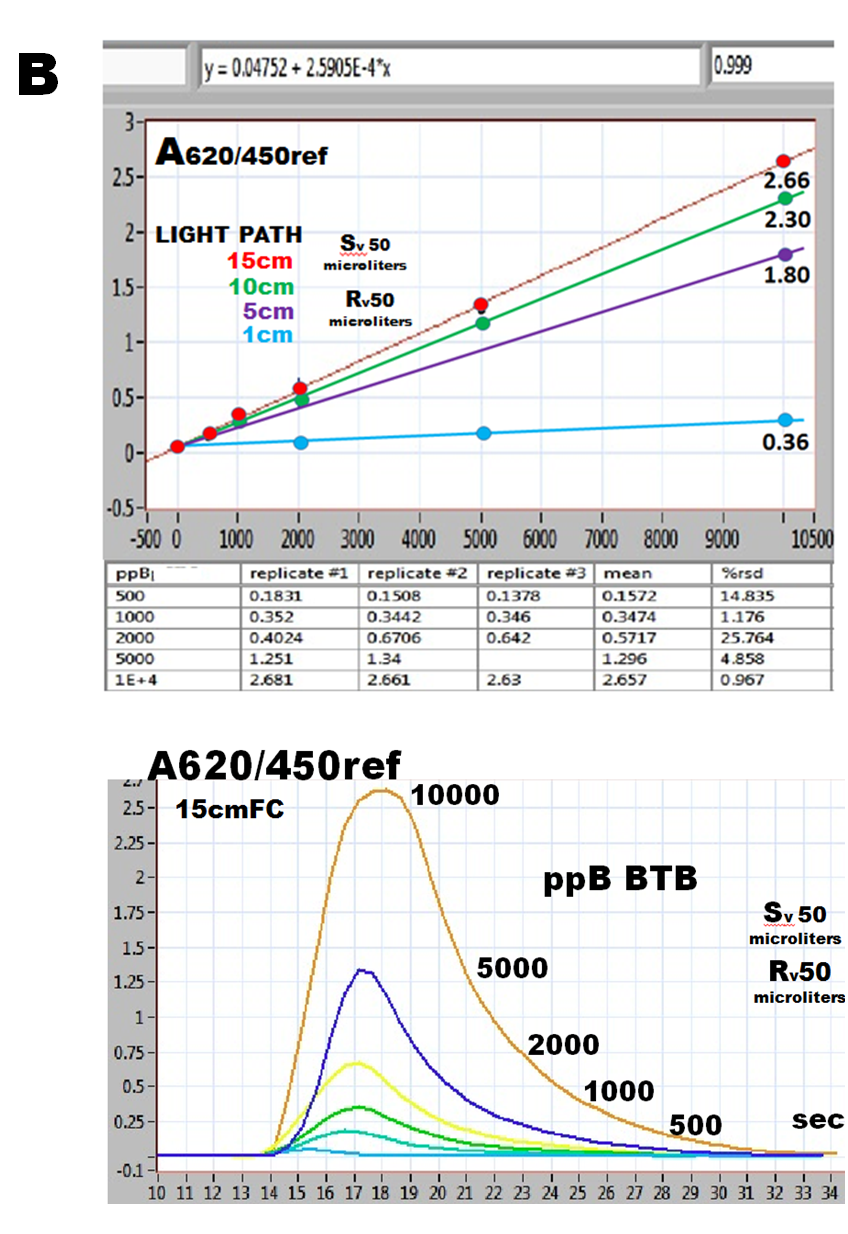Following Lambert-Beer Law the absorbance, and the sensitivity of spectrophotometry, increases linearly with the length of the light path trough the light absorbing solution. In batch type cells this light path is synonymous with cell length, but in flow trough cells it is true only if the flow cell is entirely filled with undiluted sample. In other words, increasing the cell length from 1 to 15 centimeters will not increase absorbance (and sensitivity) 15 times unless the flow cell would be entirely filled with sample solution (A). This is seen from a series of calibration lines (B), obtained with bromothymol blue standards in the range 0 to 10000ppB BTB using Garth’s cell of 0.8mmI.D and lengths ranging from 1 to 15 cm (B), using 50 microliter sample volume followed by 50 microliter of diluent (Rv). While increase of light path from 1 to 5cm yield 5 fold increses in sensitivity, longer flow cells provided a reduced yield due to small sample volume. However if the 1 cm cell (C) and 10 cm cell (D) were filled with increasing volumes of dye until Amax was reached, the 10 cm cell yielded 10 times higher A value than 1 cm flow cell.
In summary, using long light path cell has its benefits, since:
- long cell can be thermo stated (2.2.31.)
- offers temporal peak resolution from refractive index (2.2.25.)
- allows wider margin of zone positioning in FC for SFC method (2.2.8.) but increase of sensitivity will be obtained only when sample volume would be increased, as indicated by S1/2 values of the system.
Light Path Length and Sensitivity
2.3.6.A.












